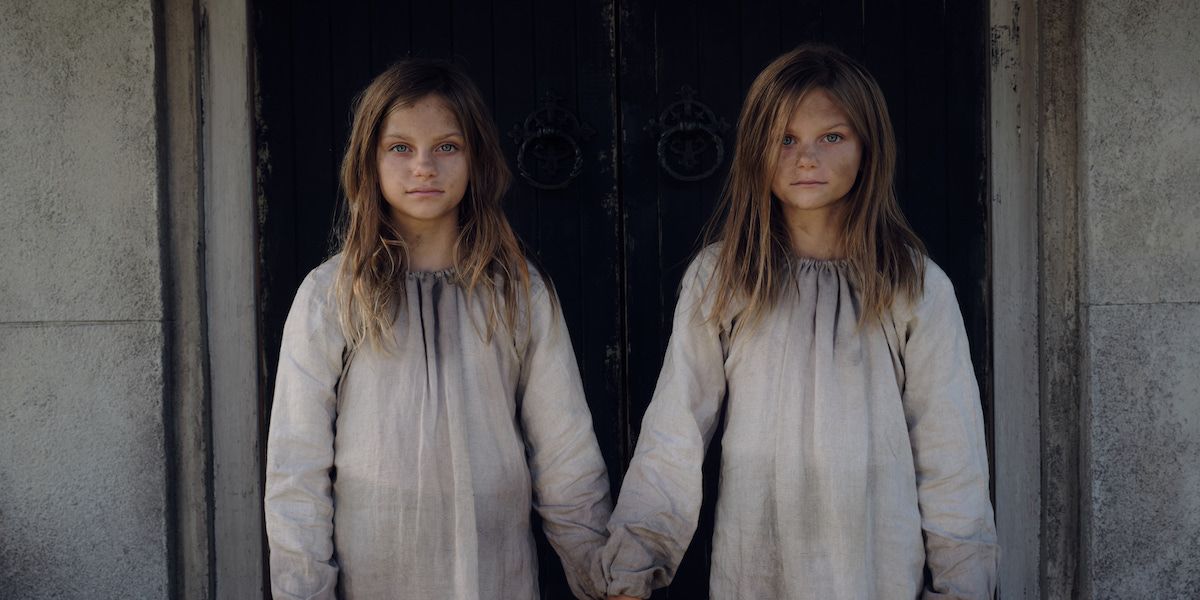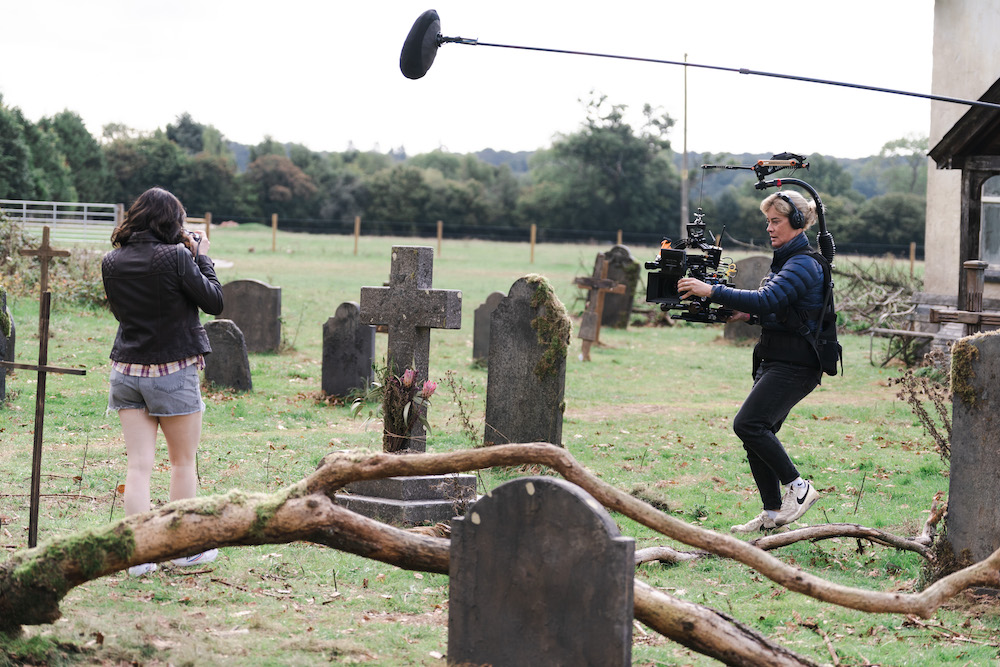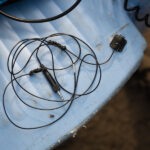
The Burning Girls: The heat is on
Posted on May 26, 2023
Cinematographer behind the eagerly anticipated series The Burning Girls talks VFX, screens and night shoots in the country
WORDS Robert Shepherd | IMAGES Buccaneer Media, Paramount+ & Joss Barratt
If The Burning Girls isn’t a disconcerting enough title, it was considerably more unnerving to find out that the CJ Tudor novel on which the Paramount+ series is based was inspired by real-life events. Adapted for the small screen by Hans Rosenfeldt, the six-part series, shot at studios in west London and on location in Buckinghamshire and east Sussex, tells the story of a reverend and her daughter seeking a fresh start in a sleepy Sussex village called Chapel Croft. They soon discover their new local is haunted by its dark history and ancient superstitions.
For Dale Elena McCready BSC NZCS, cinematographer on the production, the job offer couldn’t possibly have come at a better time.
“The script came through to my agent,” she says. “I was going to do two blocks of The Witcher last year, but there was a clash of schedules. That meant the second half of my contract opened up and this script piqued my interest. I’m a big fan of genre stories in general and have often worked on genre television and film. It’s my interest in general – as a viewer and as a reader – so it was something that I was excited to do.”
McCready isn’t necessarily your typical cinematographer – she chooses projects primarily by the quality of the script, as well as whether it appeals as a viewer. What’s more, she likes a combination of being directed and being given the space to come up with her own ideas.
“I work in-between the extremes of being told what to do and being given carte blanche to varying degrees, depending on the director and the people involved,” McCready continues. “I sat down with the director Charles Martin and we went through the script together and talked about the scenes. We broke them down in our prep process and set up what we saw in our mind’s eye, going back and forth quite a lot, designing the shots. Charles had ideas – so did I.”
When McCready first began reading the script, she wrote notes about shots. “That’s quite unusual, but it jumped out as a visual script,” she says. “I could see and hear it quickly. So, I came to the party with a lot of ideas. But there’s a process of negotiation, where the two of us discuss any ideas and see if they fit the flow of the script because it’s part of the journey. You’re not just trying to make a bunch of snazzy shots, you want it to flow so the audience is pulled through the story in the right way.”
Despite the fact that it’s a creepy horror-thriller shot in modern times, the team agreed that virtual production was barely required at all.
“We didn’t really use virtual production in the series, but there was some comping and green-screen work,” McCready continues. “We did discuss it, but there was very little need for a virtual shoot. We talked about it for some car material because I’ve used it in two different ways – the classic 3D-generated background version a la The Mandalorian, but also as a poor man’s process replacement where you do driving material, but the LED screen is much better than a rear projection screen, for example. You get better quality shooting someone against the LED volume.”
Blue screen versus green screen remains a debate, so McCready explains why one was used over the other. “When we were shooting on film, we were shooting on blue screens. As digital formats came out, we tended to favour green screens for the main reason that in the green channel of the video there is so much more information,” she explains. “So you get a lot more detail and less compression hidden in there. Whereas, the blue channel might have a lot of compression you don’t see until you go to key it and then it breaks down. More recently, I noticed VFX supervisors asking for blue again, as the spill can look more natural and digital cameras are better.”
SCREEN TIME
McCready explains how the series carried blue and green screens, so it depended on the VFX supervisor to see which was the most appropriate option. “If I’m lighting with blue light, I’ll generally use a green screen,” she says. “For night scenes, for example when we’re doing moonlight and things like that, we had the option of both and went with green if we were outside.”
Nevertheless, there wasn’t an enormous amount of keying material required in the series, but there was a lot of VFX comping on top of doubles, stand-ins or performance that’s going to be further enhanced in post-production – as opposed to keying someone into a background that isn’t there.
This article appears in the June 2023 issue of Definition. Read the full story here.















